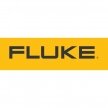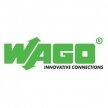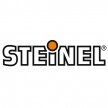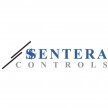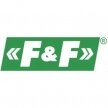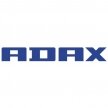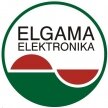-
Product Catalog
- Security and Surveillance Systems
- Automatic Circuit Breakers for Direct Current (DC) Circuits with Integrated Overload, Short-Circuit, and Voltage Stabilization Protection Functions
- Lighting with the help of electrical energy
-
Automation and Control Systems
- Automation control accessories
- Control components for automation and control systems
- Passive lifting | unloading | transporting magnets
- Signal converters | controllers for automation control | for control systems
- Touchscreens | panels for automation control | control systems
-
Power Contactors | Control Circuit Intermediate Relays
- Mini contactors for electric motor control
- Contactors | Electrical starters | For equipment control
- Electromechanical thermal relays | electrical equipment protection
- Contactors with enclosure and control buttons | for electrical equipment control
- Control coils for contactors | starters | electrical equipment control
- Adapters-converters for relays and contactors
- Additional contacts | Accessories for contactors
- Relays for electrical equipment automation control | monitoring
- Relay sockets | for connecting relays to the control system
- Relay modules | for the safe operation of electrical equipment
- Optical sensors | detectors for automation devices
- Automation control | Data transmission | Low current
- Sealing profiles | rubber | gaskets | strips
- Inflatable Liquid Storage Tanks | Reservoirs | Bladders
- Inflatable rubber plugs for sealing high-pressure plumbing pipes
- Electrical distribution and installation
- Solar Energy Generation and Management Equipment
- HVAC control solutions for heating and ventilation.
- Special products and accessories
- Other products
- Safety tools
- Quality used products
Control coils for contactors | starters | electrical equipment control
-
Control coils are key components of electromagnetic contactors and starters, which generate the magnetic field necessary to engage or disengage contactors or starters in electrical circuits. The coil switches the contacts when an electrical current is supplied, and the magnetic field causes mechanical movement that opens or closes the contacts. Control coils are used in industrial and household systems to automate and manage the operation of electrical devices.
-
Read more
Practical Applications:
Industrial Motors: Control coils are most commonly used in industrial motors that need to be regularly turned on and off depending on the production process requirements. For example, in large manufacturing equipment such as conveyors or drilling machines, control coils switch contacts that supply or cut off the electrical power to the motor. When the operator presses the "Start" or "Stop" button, the control coil initiates the switching of contacts to start or stop the motor's operation.
Heating, Ventilation, and Air Conditioning (HVAC) Systems: In HVAC systems, such as heating and ventilation units, control coils are used to manage compressors, fans, or pumps. For example, when a fan needs to be turned on or off, the control coil activates a contactor that begins supplying electrical current to the fan. When the system detects that the desired temperature has been reached, the coil disconnects the contact and stops the fan's operation.
Automated Production Lines: In automated production lines, where various devices must work together at specific times, control coils ensure that the devices are turned on and off at the right time. For instance, in factories where conveyors and production machines need to be precisely synchronized, control coils in contactors ensure that all devices start or stop working simultaneously according to the production schedule.
Lighting Control Systems: Control coils are also used in lighting systems, where large lighting networks need to be managed. For example, in stadiums or industrial buildings, where a large number of lights need to be turned on or off at once, control coils activate contactors that control the electrical current to the lights.
Automatic Door and Gate Systems: In automatic door and gate systems, control coils are used to manage the opening and closing of doors. When an opening command is sent to the gate system, the control coil activates a contactor that supplies electrical current to the motor, allowing the doors or gates to open. During closing, the coil disconnects the current, and the doors close.
Advantages:
Automation: Control coils provide the ability to automate many electrical systems, as they switch contacts without manual intervention. For example, in manufacturing equipment, control coils allow for the automatic regulation of various machines' operations based on needs, increasing production efficiency.
Reliability: Electromagnetic control coils are very reliable, as they operate based on a simple and efficient electromagnetic principle. They can function for long periods, performing thousands of cycles without failure. For instance, in an industrial environment where continuous operation of equipment is required, control coils ensure that the electrical supply is managed precisely and reliably.
Safety: Control coils allow for the safe management of high-power electrical circuits through a low-voltage control circuit. This ensures that the operator is not directly involved with high currents or voltages, as control coils handle the switching of electrical supply. This is especially important in industrial settings where electrical failures can pose risks to worker safety.
Precision: Control coils enable precise timing control of device operations. For example, in production lines where every second is critical, control coils ensure that each machine starts or stops exactly when needed.
Disadvantages:
Dependence on Current: The operation of control coils depends on the stability of the electrical current. If there is an unstable current in the control circuit, the coil may operate inaccurately or not at all. This can cause disruptions in automated systems where precise control is essential.
Mechanical Wear: Since coils control mechanical contactors, mechanical wear may occur over time, which can reduce the efficiency of the contactor's operation. In industrial systems where equipment is used continuously, contact wear can lead to more frequent maintenance needs.
Energy Consumption: Control coils require a continuous current while maintaining the contact closed, which can slightly increase electricity costs, especially in systems where contacts are often kept on for extended periods.
Examples:
Industrial Conveyors: In production lines, control coils are used to manage the movement of conveyors. When it is necessary to start or stop a conveyor, the coil activates contactors that control the motor's electrical supply. This allows for the synchronization of conveyor movement according to production processes.
Pumps and Compressors: Water pumps or compressors often use control coils to regulate the operation of devices based on system needs. For instance, in an automatic irrigation system, the coil controls the pump's activation and deactivation based on moisture sensor data.
Lighting Systems: For managing large lighting systems, such as stadiums or factory lighting, coils switch high-power electrical current to the lights, ensuring that the lighting is turned on or off at the required times.
Summary:
Control coils are an essential part of electromagnetic contactors and starters that ensure efficient and safe management of electrical devices. They are widely used in industrial motors, HVAC systems, lighting control systems, and many other electrical circuits. Although their operation depends on stable current and may require maintenance due to mechanical wear, they are a fundamental component of electrical system automation and control.No items found.
US IN SOCIAL NETWORKS







